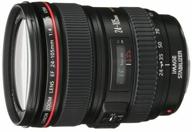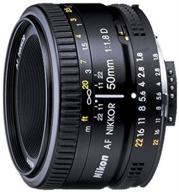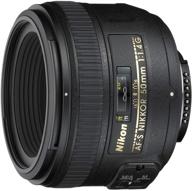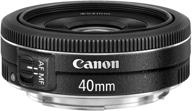
Review on 🎥 Meike 25mm T2.2 Cine Lens: Manual Focus, Low Distortion for Sony E Mount APS-C Cameras and Super 35mm Camcorders FS5 FS7 by James Wiley

Easily costs twice as much, but with some caveats.
I like the 25-30mm field of view on an APS-C camera. This is one of Hollywood's favorite focal lengths and it screams summer blockbusters! Here is a brief description of this lens: IMAGE QUALITY: Sharpness = Excellent corner to corner Contrast = Slightly washed out at T2.2 (I like it) but otherwise excellent at T2.8 Colors = Almost boringly accurate Distortion = Very slight mustache/complex Distortion (almost like an anamorphic look) Longitudinal Chroma = Soft cyan and magenta fringes on contrasting edges Vignetting = Drastic attenuation on extreme corners Highlights = Poor control! Use a lens hood or matte box. CONSTRUCTION: Outer Material = Aluminum(?), which is way better than plastic but not the best. Markings = Precise enough and indented for durability. Focuses slightly further than infinity. Focus/aperture rings: very (too) well dampened + long travel ideal for tracking focus, but difficult to turn by hand. When I found out that it's made in the same factory as the well-known (but defunct) Veydra Mini Prime lenses, I had to try it myself. After some use it turned out to be an adapted Veydra optical formula. This may explain the excellent sharpness and angular vignetting. I'm not thrilled with how the manufacturer Veydra got them to close up shop after their design was stolen, but I can't dispute Meike's overall quality and absurdly low price. OVERVIEW: If you can tolerate a tiny area of light fade in the far corners, this cinema lens offers excellent value for money. The structure, the picture and the technical data are fantastic. If you're looking for a cine lens to try and experiment with for video, you're getting a caliber of optical worlds higher than anything the SLR Magic or Rokinon/Samyang have to offer (with the exception of XEEN- lenses). . . In fact, I wouldn't be surprised if you get a 95% XEEN or Zeiss CP image with this lens. Compared to a Magic Reflex, Lomo or Vintage lens, Meike gives a very neutral, "boring" professional look. However, the main disadvantages of this lens are related to the workflow. There are reasons why investing in a cinema lens is better than a still lens, but this Meike doesn't meet all of those needs. Currently, there is no off-the-shelf set of lenses of the same size with different focal lengths (although I've heard there will be more). Focal breathing and chromatic aberration, while minor, are still present. Finally, the ability to mount this lens on a Sony a6xxx body (for compact/gimbal work) is hampered by the heavy damping of the rings: the follow focus attached to the lens gears flexes the camera body as it moves. add unwanted image shift. At the same time, most of the disadvantages can be avoided by using Meike Filmfixes on the body of the Micro Four Thirds. 16 mm and 25 mm are already available, 12 mm and 50 mm will follow shortly. Combined with a Panasonic G / Olympus OMD camera or a more serious BMPCC/Z-Cam/Kinefinity camera, this set becomes a killer compact cinema! a production set of lenses of the same size with different focal lengths (although I've heard there will be more of these). Focal breathing and chromatic aberration, while minor, are still present. Finally, the ability to mount this lens on a Sony a6xxx body (for compact/gimbal work) is hampered by the heavy damping of the rings: the follow focus attached to the lens gears flexes the camera body, while it's moving. add unwanted image shift. At the same time, most of the disadvantages can be avoided by using Meike Kino Fixes on the body of a Micro Four Thirds. 16 mm and 25 mm are already available, 12 mm and 50 mm will follow shortly. Combined with a Panasonic G / Olympus OMD camera or a more serious BMPCC/Z-Cam/Kinefinity camera, this set becomes a killer compact cinema! a production set of lenses of the same size with different focal lengths (although I've heard there will be more of these). Focal breathing and chromatic aberration, while minor, are still present. Finally, the ability to mount this lens on a Sony a6xxx body (for compact/gimbal work) is hampered by the heavy damping of the rings: The follow focus attached to the lens gears flexes the camera body as it moves. add unwanted image shift. At the same time, most of the disadvantages can be avoided by using Meike Kino Fixes on the body of a Micro Four Thirds. 16 mm and 25 mm are already available, 12 mm and 50 mm will follow shortly. Combined with a Panasonic G / Olympus OMD camera or a more serious BMPCC/Z-Cam/Kinefinity camera, this set becomes a killer compact cinema! although soft, both are still present. Finally, the ability to mount this lens on a Sony a6xxx body (for compact/gimbal work) is hampered by the heavy damping of the rings: the follow focus attached to the lens gears flexes the camera body as it moves. add unwanted image shift. At the same time, most of the disadvantages can be avoided by using Meike Kino Fixes on the body of a Micro Four Thirds. 16 mm and 25 mm are already available, 12 mm and 50 mm will follow shortly. Combined with a Panasonic G / Olympus OMD camera or a more serious BMPCC/Z-Cam/Kinefinity camera, this set becomes a killer compact cinema! Although mild, both are still present. Finally, the ability to mount this lens on a Sony a6xxx body (for compact/gimbal work) is hampered by the strong damping of the rings: tracking focus, attached to the gears of the lens and eventually flexing the camera body when it turns emotional. add unwanted image shift. At the same time, most of the disadvantages can be avoided by using Meike Kino Fixes on the body of a Micro Four Thirds. 16 mm and 25 mm are already available, 12 mm and 50 mm will follow shortly. Combined with a Panasonic G / Olympus OMD camera or a more serious BMPCC/Z-Cam/Kinefinity camera, this set becomes a killer compact cinema! The gears eventually flex the camera body as it moves, adding unwanted image shifts. That being said, most of the downsides can be avoided by using Meike film fixes on a Micro Four Thirds case. 16 mm and 25 mm are already available, 12 mm and 50 mm will follow shortly. Combined with a Panasonic G / Olympus OMD camera or a more serious BMPCC/Z-Cam/Kinefinity camera, this set becomes a killer compact cinema! The gears eventually flex the camera body as it moves, adding unwanted image shifts. That being said, most of the downsides can be avoided by using Meike film fixes on a Micro Four Thirds case. 16 mm and 25 mm are already available, 12 mm and 50 mm will follow shortly. Combined with a Panasonic G / Olympus OMD camera or a more serious BMPCC/Z-Cam/Kinefinity camera, this set becomes a killer compact cinema! 12 mm and 50 mm will follow shortly. Combined with a Panasonic G / Olympus OMD camera or a more serious BMPCC/Z-Cam/Kinefinity camera, this set becomes a killer compact cinema! 12 mm and 50 mm will follow shortly. Combined with a Panasonic G / Olympus OMD camera or a more serious BMPCC/Z-Cam/Kinefinity camera, this set becomes a killer compact cinema!
- Great product
- Something different
New products
Comments (0)
Top products in 👓 Lenses

Canon EOS SLR Camera Lens EF 24-105mm f/4 L IS USM

124 Review

Nikon 50mm f/1.8D Lens: Perfect for Nikon DSLR Cameras!

97 Review

📷 Nikon AF-S NIKKOR 50mm f/1.4G Lens with Auto Focus: Perfect for Nikon DSLR Cameras

76 Review

Canon EF 40mm f/2.8 STM Lens - Fixed Black (6310B002) for US Cameras

76 Review






